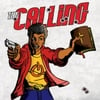It’s time for me to start defining pages and panels for chapter 4, so I am entering daydreaming mode. You know, daydreaming gets a bad rap. Whenever we think of daydreaming we envision a kid in school gazing out of the window into another world while his teacher is sharing the lesson. Unfortunately, to this kid at this time, the teacher sounds like she has a starring role on Charlie Brown. OK…so this ain’t good, but I submit to you that there is a proper time to daydream when creativity runs rampant and things get done!
When Jeff gives me script pages, I still need to break them down into comic panels and pages. I’ll do this for a scene before I draw anything. His writing style for a scene usually consists of an establishing shot to set environment, location, and mood. Then he’ll go into the dialogue, mixing in “call outs” of all of the very important shots. These “call outs” kind of work like key frames or check points for me. They provide tempo and sometimes work as mood/attitude shifts for certain scenes. Now he leaves the space in between these “call outs” with mostly dialogue, totally up to me as far as what to draw. This works because he doesn’t have to block the complete scene, it allows him create the type of flow he needs in order to get his daydream onto paper.
So when he gives me the environment, mood, and dialogue, I daydream to figure out how to best present it in sequential art. I try to place myself in the scene, I’m the fly on the wall, but I visualize it like a movie. A general rule is that there is only one action per frame. Our goal as story tellers is to choose actions that the reader can tie together from panel to panel. In comics something is always happening, even in the blank space between panels, the reader just doesn’t see it; they have to visualize it themselves.
So when two people are having a conversation, to add interest they can be completing an action too. This is how I add blocking to a scene that Jeff has given me environment, mood and dialogue for: In panel 1 the smug character lights a cigarette as he speaks to a character with less confidence. Then in the panel 2 the smug character blows smoke into the other less confident character’s face. Finally, in panel 3 we see the less confident character deciding whether or not to stand up for himself as the smug character turns his back to walk away. This is just my first pass. For my second pass, I go back and daydream camera angles which can make a scene average or great. Then, for my third pass, I break down the panels to pages. I do all of this before I draw a single picture…daydreaming in my mind and then jotting down notes onto paper.
This is just my process. It may be too mechanical for some of you and not mechanical enough for others. I just encourage you creative folks to take the time to daydream. Do what you have to do to set a mood. There are many examples that folks use to set the mood such as, total silence, scented candles, vibey music, or environments like coffee shops, the beach, or driving in the car on the way to work. Basically, do what you need to do to get your daydream on…and the creativity will follow!



